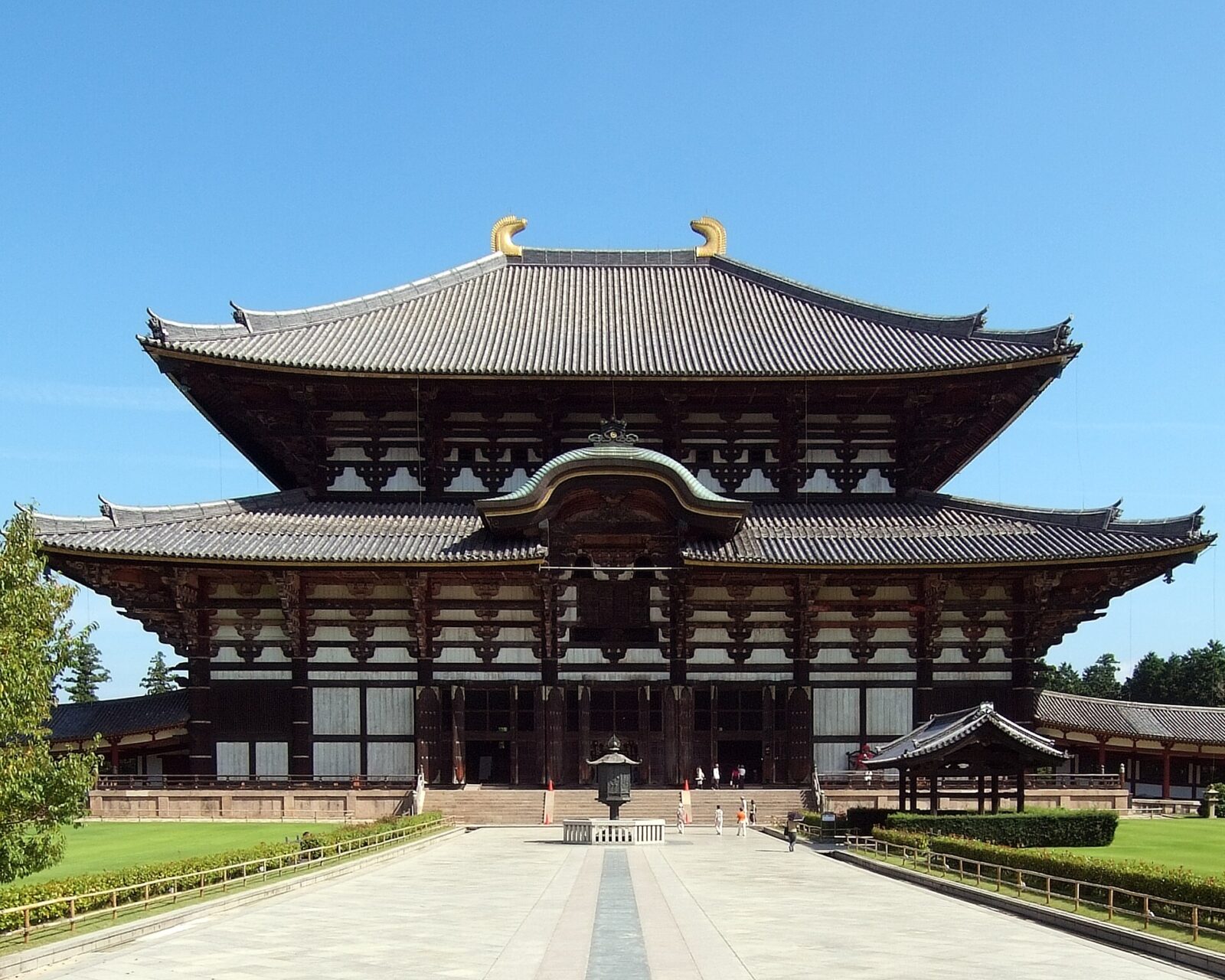Apologies for the delayed publication! This week on the podcast: the Nara Period! Japan has a new capital, and surely that means politics are about to change and become more stable, right…?
Show notes here.
Sources
Naoki, Kojiro “The Nara State”, and Koyu Sonoda “Early Buddha Worship”, in The Cambridge History of Japan, Vol 1: Ancient Japan.
Bender, Ross. “Emperor, Aristocracy, and the Ritsuryo State: Court Politics in Nara” in Japan Emerging: Premodern History to 1850, ed. Karl Friday.
Images
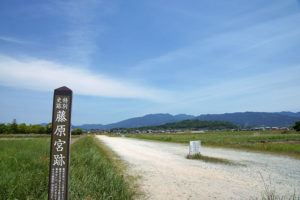
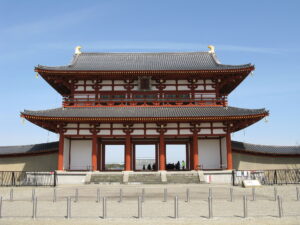
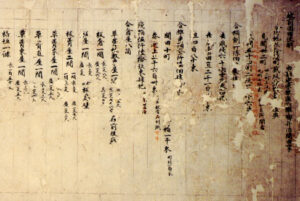
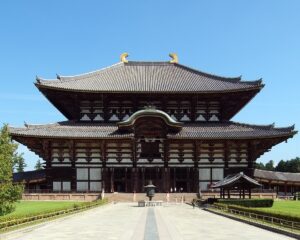

Transcript
The academic Ross Bender said of Japan in the 8th century (the 700s, in other words) that. “The eighth century represents a critical period for later Japanese culture, an era whose institutions and ways of thinking helped shape the rest of Japanese history.” And he’s absolutely right to do so.
Our basic narrative of Japanese history so far–which has been largely focused on the lives of the elite, but that can’t really be helped given the sources available to us–has followed a pretty clear pattern.
In the 6th century (so, the 500s CE), the Yamato Kingdom ran into its first major setbacks at home and abroad after several centuries of largely unchecked expansion from its home base in what’s now Nara Prefecture.
As we’ve seen over the last two episodes, the kingdom–both its emperors and the powerful omuraji, or clan chieftains, who helped govern it–responded with a series of reforms intended to strengthen the dynasty.
In particular, starting in the 600s, those reforms became increasingly shaped by models from the Asian mainland, and especially imperial China–where the new Tang dynasty was rapidly expanding its power and wealth.
Those reforms were also piecemeal–while it can be historically convenient to center the so-called Taika Reforms of 645 in our discussions of this era, the reality is more a series of piecemeal reforms both before and after that year.
Frankly, it’s hard for me at least to avoid the impression of a leadership that is simultaneously building the ship of state and trying to navigate it–a fraught proposition, to say the least.
And while many of the reforms of that time were impressive, they were also decidedly mixed in terms of track record. After all, the system was not what you’d call stable.
The first period of reform was ushered in by the Soga clan after they crushed their opponents in a civil war and succession dispute in 587. The second took place after a coup d’etat and assassination plot by anti-Soga forces in 645. And Emperor Tenmu, who took office in 673 and inaugurated yet more reforms, was only able to do so by first launching a civil war and deposing his own nephew.
This is not, on balance, what you would call stable government by any stretch of the imagination.
The story of the 8th century, then, is the story of continued reform–further attempts to expand the power of the imperial throne in order to solidify the hold of its rulers over their territory. But here too, success was not guaranteed and setbacks abounded.
In his separate essay on this period, Naoki Koijro identifies three distinct periods of reform during this time period. The first was undertaken by the victorious emperor Tenmu and his spouse and successor, Empress Jito, during the final decades of the 600s.
Tenmu and Jito, having risen to power together after a succession dispute that had become a full-scale civil war thanks to the competing interests of rival powerful clans, concerned themselves primarily with trying to weaken and control those clans as much as possible.
After all, the very clans that put them into power could turn on them as well.
Thus, when he took the throne Emperor Tenmu did his very best to centralize administration under himself and his allies. Previous emperors had relied on powerful clan leaders, who filled the administrative positions of udaijin and sadaijin, or ministers of the right and left, and oversaw the management of the state. One of Tenmu’s major reforms was the creation in 689, of the position of daijou daijin–grand chancellor–a position he granted to members of his extended family or trusted advisors. The power of the two ministers of the left and right was further restricted by the nagon, or counselor, a sort of imperial secretary responsible for implementing the emperor’s will – and who in so doing could serve as a check on the ministers of the left and right.
Empress Jito also served as a powerful figure at court even before she took the throne from her husband (to serve as an interim ruler for their son Prince Kusakabe, though he died before he could take the throne himself). Even before her reign, she was one of her husband’s closest advisors.
Simply put, the administrative structures put into place by Tenmu and Jito were designed to make it easier for the emperor to control those who were supposed to “advise” him, while still maintaining the positions of sadaijin and udaijin as “gifts” for powerful clan leaders to keep them complacent.
The two also worked hard to strengthen the religious foundations of the imperial state. This is something that is a bit hard to conceptualize, I think–the idea that the spiritual foundations of a state are as important as the hard realities of politics, economics, or military power sits a bit strangely with our modern perspectives.
But for the imperial clan, so much of its legitimacy was predicated on what we’d call religious justification–for example, as we covered last week, it was Tenmu who began the practice of referring to the emperor as an akitsugami, or living god, and Jito who adopted the term we use now for emperor (tenno, or heavenly sovereign) specifically to give the position a connotation of divine power.
Tenmu also began a practice of grading shrines, with higher grades reserved for shrines more closely tied to the imperial line and the highest position reserved for Ise Shrine in what’s now Mie prefecture, dedicated to veneration of Amaterasu–the sun goddess from whom the imperial line is supposedly descended.
It was also Tenmu who began the practice of sending imperial relatives to serve in positions at that shrine–in particular, of dedicating women from the imperial family to the role of shrine priestess, and of sending imperial heirs there to worship on the emperor’s behalf and reinforce that connection between Amaterasu and the imperial clan.
In addition to the focus put on Japan’s traditional gods, Tenmu and Jito also began to step up state sponsorship of Buddhism. Before their reign, temples were generally supported by individuals or clan groups–for example, Asukadera in Nara would serve as the family temple for the Soga clan, which would maintain the temple in exchange for its priests offering prayers to the Buddha on their behalf (the karmic merit of which would partially accrue to the Soga clan).
It’s a bit strange to think about it this way because in the West we tend to have a view of Buddhism as anti-materialistic, but this kind of aristocratic Buddhism was in one sense very much oriented towards being able to pay someone else for the “labor” of prayer–the farming out of one’s spiritual wellbeing.
Tenmu and Jito revised this practice and began to directly sponsor temples themselves–for example, in the first year of Tenmu’s reign, he massively expanded the nation’s first imperially-sponsored temple (the Kudara no Odera) and moved it to the site of his own palace. Eventually, he renamed the temple to Daikan Daiji (the temple of the great official, a reference to himself); today it’s known as Daianji, one of the seven great temples of the city of Nara.
Tenmu also began the practice of offering stipends to the priests of those old clan temples (like Asukadera)–on the condition, of course, that the priests also offer prayers on behalf of the imperial family.
Viewed as a whole, it’s clear that the goal of imperial religious policy was to use religion to give the imperial family as much legitimacy as possible, and to strengthen the prestige of the imperial clan–not to mention offering it spiritual aid against any misfortunes that could come its way.
Tenmu and Jito’s leadership also saw the substantial revision of Japan’s legal and administrative code–a process that had already begun before their reign, but which substantially picked up after Tenmu’s victory in 672. Those codes collectively laid out a model known to history as the ritsuryo system–ritsu being the character for “civil” and ryou for “administrative”, meaning that the ritsuryo system laid out the basis for managing both these types of affairs.
Now, once again this system took shape over decades, and I don’t think it makes sense for us to go through each of the various edicts creating it rather than looking at the system wholistically. Broadly, the ritsuryo system laid out a pattern of government administration that would remain in place for centuries–and which, in modified form, would continue to operate until the 1800s, though for the last half a millennium it was entirely ceremonial. Still, that makes it pretty important to consider.
Broadly, the system set up a central government under the emperor divided into two parts–the Dajokan, or council of state, and Jingikan, or council of religious affairs. We’re far more concerned with the former, of course, which was dominated by the grand chancellor, followed by the ministers of the left and right (daijo daijin, sadaijin, and udaijin). After them came four dainagon, or senior counselors.
Collectively, they oversaw eight ministries (central affairs, personnel, civil affairs, popular affairs, war, justice, treasury, and imperial household)–with the minister of the left overseeing the first of those four, and the minister of the right the latter ones. They also managed few other government units like the palace guard.
The codes also outlined systems for tribute collection and for military conscription–Japanese armies still being conscript ones at this point–and most importantly delineated the 60 traditional provinces of Japan, which still sometimes get referenced in historical or poetic allusions (though they were replaced more than a century ago by the prefecture system).
Of course, one of the biggest markers of imperial power was the shift in the way the capital was constructed. As a reminder, up until this point in Japanese history the position of the imperial capital had rotated on a semi-regular basis, for reasons that are not entirely clear. But starting in the 600s, there was a shift towards constructing grander and less temporary capital complexes.
After the 645 coup, the new leadership constructed a larger imperial palace based on the model of the Chinese emperor’s palace in the Tang dynasty capital of Chang’an. And under the reign of Jito in particular, the government constructed a brand new capital at Fujiwarakyo (today Kashihara in Nara prefecture), the first to be intentionally constructed on a Chinese model.
If you don’t know what that means–like the ancient Romans, Chinese imperial city planners liked a good street grid system running north south and east west. They also liked a good bit of symbolic architecture, with a massive palace complex on the north end of their capital city and a primary entrance to the south. Indeed, one of the symbols of imperial authority in China was having a ruler sit facing south, to the extent that in both Chinese and Japanese “pointing south” is still used as a term for giving instructions to someone.
Fujiwara-kyo was constructed on this model, with a massive scale for the time–the capital was 3.2 kilometers from north to south and 2.1 km from east to west (respectively 2 and 1.3 miles in freedom units), with an estimated population of 60-70,000.
Jito and her successor Monmu would reign from this capital for decades, until Monmu’s death in 707.
After Monmu’s death, Fujiwara-kyo was abandoned as the capital, yet again for reasons that are unclear. Instead, the court relocated to the south, to a new capital known as Heijoukyou (the capital of the peaceful citadel)–known better today as Nara.
Once again, the new capital was constructed on the model of the imperial capital of Chang’an, with the same north-south and east-west roads–in fact, several of Nara’s roads continued onward directly into the avenues and boulevards of Fujiwarakyo.
Nara outgrew Fujiwarakyo by leaps and bounds–at its height in the mid-700s, the city probably had more than 200,000 residents. It also became a center of religious authority for the throne, replete with massive Buddhist temples (including the seven great temples of Nara, about which more in a bit) as well as more traditional shrines.
The new capital, simply put, was intended once again to be a symbol of the power and authority of Japan’s emperors. As a side note, this is also around the time those histories we’ve been relying on–Kojiki and Nihon Shoki–were first compiled, also with the specific intent of strengthening the hand of the emperors by legitimating their rule.
However, here’s the thing–all these attempts to further strengthen the power of the emperors? Well, we’re not so sure they worked. You see, when an emperor took ill, it was customary for shrines and temples to offer prayers for his recovery, which were recorded in the histories of the court for posterity.
Monmu did not get this, died very suddenly, and did so at the tender age of 23–which has led to suspicions that he was assassinated.
Of course, we don’t know that for sure; that’s the thing about well-executed assassination plots, you can’t really know for sure whether they happened. But certainly, there are reasons to be suspicious–particularly because there was someone well positioned to benefit.
You see, remember back last episode when we talked about the coup in 645 against the Soga? It was led by an imperial prince (Naka no Oe, the future Emperor Tenji), but also by one of the anti-Soga clan chieftains, named Nakatomi no Kamatari. After it succeeded, Kamatari was showered in honors, one of which was a new and more regal sounding family name for himself and his successors–Fujiwara, or ‘wisteria meadow.’
The newly-renamed Fujiwara family was naturally closely allied to the new leadership of the imperial family, with that alliance being cemented by a series of intermarriages, particularly emperors taking Fujiwara wives and concubines.
As a result, when Monmu died young, one of the foremost candidates to succeed him was his six year old son Obito, great-grandson of Kamatari. The current head of the Fujiwara family, Fujiwara no Fuhito, obviously favored his candidacy–one might even suspect he had been behind arranging this opening for his preferred heir to advance. Indeed, as one of the three dainagon, or grand counselors, he did have the influence to advance his preferred candidate–and of course, a motive for removing the previous emperor to speed things up.
Of course, we can’t prove that’s what happened; still, if that was the goal of Fujiwara no Fuhito, he would not succeed right away; there remained enough other powerful families at court to frustrate his ambition to have Obito crowned. Histories like Nihon Shoki do not record the debates around this moment; likely, these other aristocratic families objected out of a combination of belief that Obito was not suited for the job (since he was not of pure descent from the Imperial Family but mixed Fujiwara/imperial) and out of concern (not unjustified in retrospect) that the Fujiwara were aiming to dominate the government just like the Soga clan before them.
Instead, one of the departed emperor Tenmu’s siblings, Empress Genmei, took the throne–though Fuhito was probably encouraged by the fact that Genmei wanted Obito as her heir.
The first two decades of the 700s were thus politically defined by a struggle between pro- and anti-Fujiwara forces at court, with the pro- forces aiming to get Obito on the throne and the anti-forces attempting to block it.
Fujiwara no Fuhito would not live to see the final outcome, dying in 720; he’d succeeded in getting Obito named crown prince and getting himself bumped up to minister of the right, but when Empress Genmei abdicated in 715 she handed over the throne to her own daughter Empress Gensho instead. It’s not entirely clear why; the common assumption is that at 15, Obito was considered too young.
However, his father Monmu had been 15 when he was enthroned; more likely, this was yet another result of concerns about his Fujiwara parentage.
What emerged in the aftermath of Fuhito’s death was yet another power struggle within the government, this time between pro- and anti-Fujiwara forces. I won’t spend too much time delineating the different major figures, because the family trees can get EXTREMELY complicated, and to be frank I have a hard time following them without having an actual graphic of the respective family lines in front of me.
Polygamy may be good for ensuring you have enough heirs floating around, but god help me does it make keeping track of sons and daughters absolutely mindbending.
The competition could get extremely violent. For example, after Fujiwara no Fuhito’s death in 720, one of the major figures who emerged into the power vacuum left by his absence was an imperial prince named Nagaya. Prince Nagaya was a grandson of Emperor Tenmu by way of one of Tenmu’s sons who had not sat on the throne. He was also extremely anti-Fujiwara in his politics out of an (again not unjustified) sense that the Fujiwara were becoming just as much of a threat to the power and independence of the imperial throne as the Soga had once been.
For a time, he was extremely successful, taking over Fuhito’s old post as minister of the right and standing against further Fujiwara advances at court. But that enmity also painted a target on his back; in 729, Nagaya was charged with plotting a rebellion against the court (almost certainly based on planted evidence, though it’s hard to be sure).
Before any further investigation could take place, a Fujiwara son took it upon himself to “enact justice” by assembling forces to surround Nagaya’s palace. Nagaya, knowing he was trapped, committed suicide to avoid capture, as did his entire family.
The Fujiwara found other ways to expand their power as well. For example, by the early 700s, Buddhism was well established as a part of Japan’s religious fabric, though one largely restricted to the upper classes because many common forms of veneration (like sutra chanting) required both a lot of free time and literacy in Chinese.
Still, there were popular forms of Buddhism emerging even at this early moment–though it would take a few centuries for Buddhism to truly become a religion of the masses.
For example, early in its inception, Nara became home to a Buddhist monk named Gyouki who became famous for doing something rather unusual–preaching Buddhist law in simple terms to the city’s masses. His focus was on simplifying Buddhist teaching into a comprehensible discussion of causality and karmic retribution–basically, teaching that you get good from the world by putting good into it, and the reverse.
Gyoki’s teachings became quite popular by the early years of the Nara era (as the period where Nara was the capital is known), drawing substantial crowds–for which the government banned him from preaching publicly.
It’s a bit unclear why this happened–the most common theory is that Gyoki’s teachings were drawing large numbers of poor farmers from the countryside, who in turn were being encouraged to abandon their own fields in favor of cultivation and infrastructure work on behalf of Buddhist temples (an act which would accumulate good karma for the farmers who did it). Unfortunately, that also cut into the government’s tax base–those farmers leaving their fields weren’t generating the income the state relied on to operate.
Gyoki, however, continued to preach–relying (quite successfully, as it turned out) on his popularity to protect him from government retribution. And by 730, his following was such–tens of thousands of followers coming to Nara over the course of several days to see him– that members of the Fujiwara clan started to see value in him. The clan, led by this point by four sons of Fujiwara no Fuhito whose names I will not trouble you with because oh lord have I thrown a lot of them at you, used its influence to push through a new regulation lifting the ban on Gyoki’s teachings–and indeed encouraging his followers (at least those too old to work in the fields) to take up roles as Buddhist priests to staff the growing numbers of temples. It’s certainly not impossible that this was done out of genuine piety and belief in Gyoki’s ability to spread an important Buddhist message; however, it’s hard not to escape the feeling that the Fujiwara leaders who pushed for this were also hoping Gyoki’s supporters (and the temples benefiting from their patronage) would feel some sense of indebtedness to the Fujiwara clan.
In a somewhat ironic twist, the Fujiwara clan that had overthrown the Soga–who in turn had based part of their power on being patrons of Buddhism–were now securing their power by patronizing Buddhism themselves.
This jockeying for power continued through the Nara years, interrupted only by one of the biggest catastrophes in early Japanese history. In 735 a trade ship from Silla arrived in what’s now Osaka, carrying with it the usual trade goods but also an unknown and deadly passenger.
Smallpox is not something we think about; it is one of only two diseases that has ever been successfully eradicated by humans thanks to vaccination (and the only one that infects humans; the other one is a cattle disease).
Get your shots, people.
In its heyday, smallpox was an absolute killer, particularly in populations (like Japan up until this point) that had not been exposed to it. In the two year smallpox epidemic following this ship, approximately one out of every three people living in Japan died–including all four of those Fujiwara sons and countless other members of the nobility.
The court, thrown into disarray–not only by the deaths, but by the mass migrations of people hoping to escape the disease, and by the interruptions to its tax income–threw itself into trying to mitigate the epidemic. Unfortunately, the only option they knew of was divine intervention; massive resources were poured into constructing temples and supporting priests (including Gyoki himself, now an officially sponsored monk) praying for the end of the epidemic.
Indeed, one of Nara’s greatest temples–Todaiji, with its massive Buddha statue–was constructed shortly after the epidemic ended, and almost certainly as a way to accrue karmic merit to the court and thus protect it from such catastrophes in the future.
The devastation of the 735 smallpox epidemic threw Nara into chaos, and temporarily set back the Fujiwara stranglehold on power–if for no other reason than that the clan leadership had all died of smallpox. In their absence, other clans rushed in to fill the void; in particular, the Tachibana clan, led by Tachibana no Moroe, became extremely influential at court.
Moroe set about securing his family’s hold on power by merrily demoting remaining Fujiwara relatives and posting them to jobs out in the countryside provinces, far from the center of power at Nara. As you might expect, this created quite a bit of tension with the surviving Fujiwara leadership, and in 740 one prominent member of the family, Fujiwara no Hirotsugu, took it upon himself to launch a rebellion against the Tachibana–making use of his remote posting in Kyushu in order to rally supporters to himself far from the centers of power.
The rebellion ended disastrously for the Fujiwara, with government forces crushing his army swiftly in a single battle in northern Kyushu–but still, it was yet another sign of trouble in extremely troubled times.
And the times would not get any better over the next few decades. By this point, the Fujiwara prince Obito had finally taken the throne as Emperor Shomu, but his reign had been disastrous between the rebellions and epidemics and fighting between his advisors. The emperor spent a great deal of time on tours of the provinces, and actually attempted repeatedly to relocate the capital out of Nara over the course of the 740s.
It’s unclear exactly why; theories have ranged from an attempt to please differing powerful clans by locating the capital near their zone of influence to attempts to find a site that would be absent the spiritual baggage of the last few decades and allow a fresh start for less troubled times. Still, it doesn’t really matter; the idea of relocation was abandoned by 745, likely due to lack of funding.
And despite Shomu’s best efforts for a fresh start–which included dedicating yet more temples to accumulate positive karma on the behalf of the state, and upping the funds available to existing ones–things continued to go downhill.
Shomu would abdicate in favor of his daughter–known to history as empress Kouken–in 749. Kouken is an interesting figure historically; she served functionally as a proxy ruler for her own mother the empress consort Koumyou, who was highly politically ambitious but kept from taking the throne after her husband’s retirement–likely because she was of Fujiwara ancestry, and close with one of the few remaining prominent members of the Fujiwara family, Fujiwara no Nakamaro.
Kouken would remain on the throne for about a decade, serving largely as a proxy for her mother Koumyou and for Fujiwara no Nakamaro in the process as they collectively sidelined their own opposition using their control over Kouken–for example, Tachibana no Moroe’s son was implicated in an assassination plot the year Moroe died targeting Nakamaro, and executed for his trouble. In 758, Kouken was “invited” to step down in favor of her son Emperor Junnin, who was 29 but apparently kind of a doormat and pliant to “management” by Koumyou and Nakamaro.
However, two years after this Empress Koumyou would die, and in her wake things once again became quite unstable. The court started to divide around a young emperor too inexperienced to manage things, with one faction of courtiers following Fujiwara no Nakamaro and another following the now retired Empress Kouken. These two, meanwhile, jockeyed for influence over Junnin, a man who as far as I can tell had no opinions of his own.
Kouken in turn was strongly allied to a Buddhist monk named Dokyo, about whom not much is known. He was in his 60s by this time, born in the area of modern Osaka from a provincial family–his family arranged for him to become a monk at Nara’s massive Todaiji, where he caught the eye of Kouken. Particularly after he was able (supposedly) to cure her of an illness with his prayers, he became a part of the empress’s inner circle and one of her most closely trusted advisors.
As a result, the growing split between Kouken and Fujiwara Nakamaro is often painted as yet another Buddhist/traditional early Shinto battle–and also as an issue of corruption, with the monk Doukyou manipulating the empress for his own benefit. in reality, it’s not the case that Kouken enjoyed unified support from the Buddhist establishment or that Nakamaro was opposed to Buddhism as a faith.
In retrospect, it’s clear that what was really happening was a power struggle between Kouken and Nakamaro.
In his writings on the subject, Delmer Brown suggests that this was really a political battle over the nature of the emperorship, with Kouken looking to protect the independent authority of the throne as it had existed since the overthrow of the Soga, and Nakamaro hoping to bring the throne under his control and push the emperor into the role of religious figurehead. Certainly going forward, we’ll see many more battles about exactly what the role of the emperor–ostensibly the master of the realm–actually was.
In the end, Kouken won out; in 764, Nakamaro attempted a coup d’etat to seize control of the palace at Nara, but Kouken’s forces were able to stop him. Nakamaro then attempted to flee east, where his supporters were more numerous, but Kouken’s forces caught up with him on the shores of lake Biwa before he could escape. In the ensuing battle, Nakamaro was killed–and Kouken’s position secured.
Kouken, her power secured, would then remove her son from the throne and resume direct rule in her own right (confusingly taking a new regnal name in the process, though I’m going to continue to call her Kouken).
Kouken would continue to reign for 5 more years until her death at 57, with Dokyo at her side–one of the histories of the period, the Shoku Nihongi, actually records that at one point there was discussion of making Dokyo a reigning emperor in his own right–suggestions that Kouken nixed, though she never punished Dokyo and appeared to believe he had no involvement in the idea.
It seemed that the imperial line had triumphed; successive emperors had thrown off the rule of the Soga, Tachibana, and Fujiwara clans who had tried to control them, and Kouken had sealed a new era of imperial supremacy atop a far more centralized state than Japan had ever seen, thanks to the reforms of the past century.
And then, from nowhere, it all came crashing down. In 770, Empress Kouken died suddenly at the age of 52, without having named an heir publicly. Shortly thereafter, a letter was discovered purporting to be from her and naming an imperial prince named Shirakabe as her successor.
That letter, however, was almost certainly a forgery, and one crafted by–wait for it–one of the few remaining Fujiwara leaders left in the center of power, Fujiwara no Momokawa.
Why do we suspect that? Well, here we have to go back in time a bit and talk about family trees. All the emperors I have described over this episode were from the branch of the imperial family–which has an extensive family tree thanks to all those concubines male emperors tended to have–descended from Tenmu and/or Jito, the two rulers who put the country back together after the civil war of 672.
This was the branch of the family that had made its mission–or at least that of its most prominent members–protecting and expanding the power of the throne against potential usurpation by the clans.
Prince Shirakabe, however, was from a different branch of the imperial line–the one descended from Emperor Tenji, which did not have quite the same reputation.
And they were able to use that edict to put Shirakabe (known to history as emperor Kounin) atop the throne, and have a grateful Kounin appoint them to key positions in the new centralized bureaucracy.
Hangers on from the Kouken period, like that Buddhist priest Dokyo, were booted from office–he was exiled to Shimotsuke province in the remote Kanto plains of the east, never to be heard from again.
This time, Fujiwara dominance was not so easily bucked. When Kounin had his first son by an imperial princess descended from the Tenmu/Jito branch of the family, that princess was promptly framed for something (cursing the emperor to make him besotted with her) and demoted–the young prince was exiled. Instead, Kounin found another descendant of the Tenji branch to provide Kounin with an heir, ensuring nobody from this unruly branch of the family ever had a shot at inheriting the throne again.
Thus, the “Jito/Tenmu subdynasty”, so to speak, came to a close, and before long so too did the Nara era. After a century of reform in new, Chinese-style capitals, the state was far stronger than ever before, but also impoverished by several civil wars and constant new building projects to support the growing institutionalization of Buddhism. And after a chaotic century, the Fujiwara clan was now in control of the reigns of power.
You can see why, perhaps, by this time Nara was starting to feel like it too had too much baggage as a capitol city, and why once again the prospect of relocating the capital was brought forth. Next week, the capital will move again–for the last time in a while, thankfully–and a new era of government, dominated by the Fujiwara and associated with some of the greatest cultural flourishing in Japanese history, will emerge.
